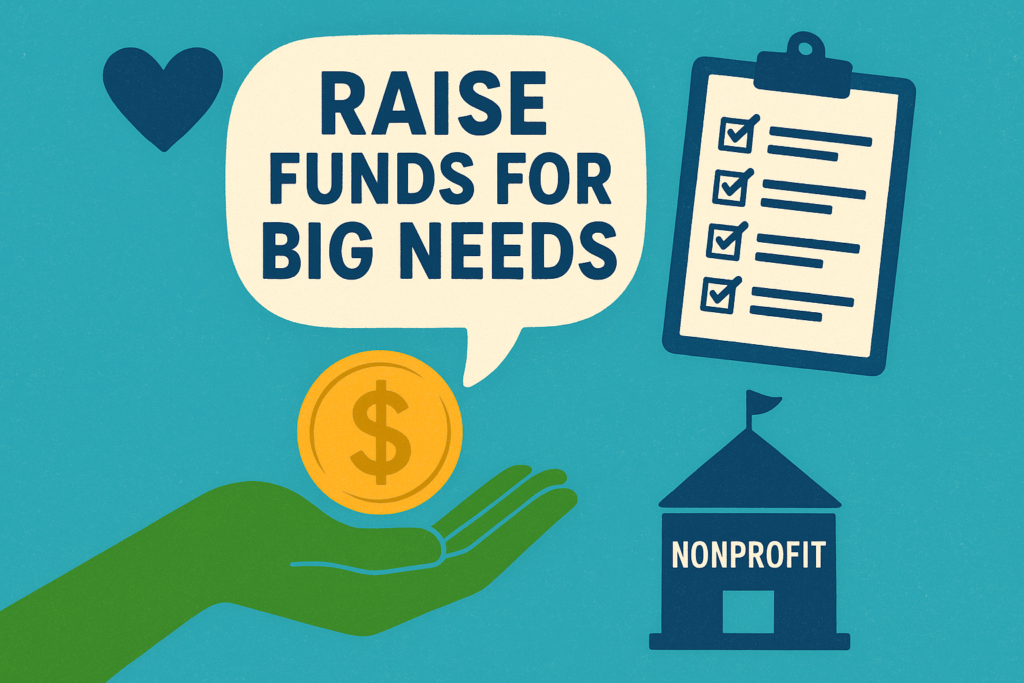Another consultant recently reminded me of a concept that’s been implicit in fundraising materials I’ve generated for clients, but that I’ve never written about.
The concept: the needs you present donors don’t have to match the budget you use for fiscal management. Indeed, if you’re only presenting your actual budget to funders, you’re setting yourself up for reduced impact.

This can be confusing because foundation funders nearly always ask for your adopted budget, so that becomes the default that many nonprofit leaders think individuals will want to see with fundraising.
To understand why that hamstrings you, let’s review what goes into a nonprofit budget.
The budget should be adopted annually by your board and should identify the revenue you’re seeking to achieve in the upcoming fiscal year, along with expenses. Both revenue and expenses should be broken down by categories to allow for a reasonable understanding of the major sources of revenue you’ll receive, along with the various ways you spend money.
Here’s the important part: the budget is a tool for the board to exercise its fiduciary duty and ensure that the organization is being prudent with how it spends money. If it spends more than it receives on an ongoing basis, this could lead to a cash flow crunch, inability to meet payroll, and other significant challenges.
Note: I deliberately inserted the words “ongoing basis” into the above paragraph. In any given year, you may very well adopt a budget that spends more than you raise if you’re entering the fiscal year with a more than adequate reserve. And in other years, you may well adopt a budget to raise more than you spend, particularly if you’re hoping to build up a reserve fund or save for some really big future expense.
So why shouldn’t you present to donors the revenue targets in your budget and call that your need?
Two reasons.
Reason one is the simplest and least important: timing. Your budget is for a fiscal year, but you’ll be talking to many donors late in a fiscal year, before the next budget is adopted. You need to be able to articulate needs for the subsequent fiscal year.
Reason two is the crux of the matter: if you want to inspire big, investment level gifts, you need to be able to articulate the actual needs you have to grow your capacity to significantly advance your mission. Big audacious goals are more likely to generate big audacious gifts. Yet, budgeting for big and audacious isn’t prudent.
How does this play out in practice?
With one of my clients, we created and regularly updated a “Funding Needs” document that was two pages long. The initial two-thirds of a page provided context (the organization’s mission, leadership, and core strategy). The remainder laid out major areas of expenses that need to be incurred to achieve greater impact. Big, round numbers were used that covered the needed expenses over a 3 year period. These covered both major, new projects/activities and ongoing needs, including general operating expenses.
We shared this document broadly with potential/current funders, individual major donors, and stakeholders. Occasionally this led to some restricted gifts, particularly from foundations (and in one case an individual) interested in one specific need articulated. But overall, those shared this document in many instances made large, new, unrestricted gifts. This was true both for foundations and individuals.
Of course, some Executive Directors are nervous about projecting out activities/expenses before the board has authorized them in the form of budgets. Indeed, a Funding Needs document shouldn’t identify any major new area of expense that hasn’t been discussed with the board. But that discussion can come in the form of strategic planning or some other discussion about long-term needs.
The 2-pager approach described above is just one way of accomplishing this outcome. You could create something longer and fancier. Or use this approach on a more ad hoc basis.
But bottom line: to inspire big gifts, focus on the dollars needed to significantly advance (or achieve) your mission, over a 2-4 year period. Don’t just ask donors to help you hit your budget targets.




